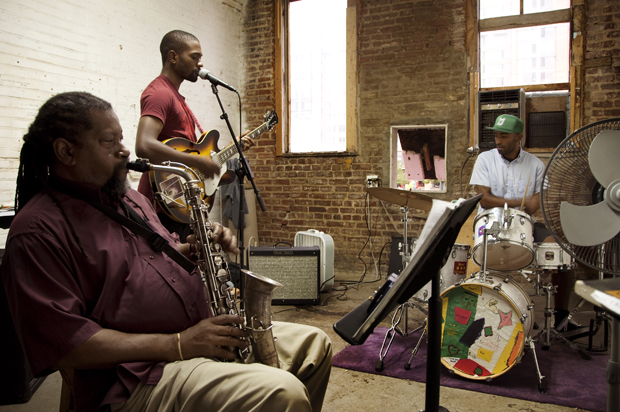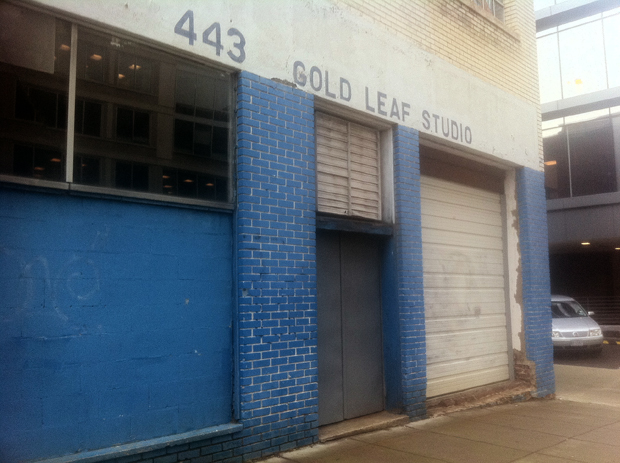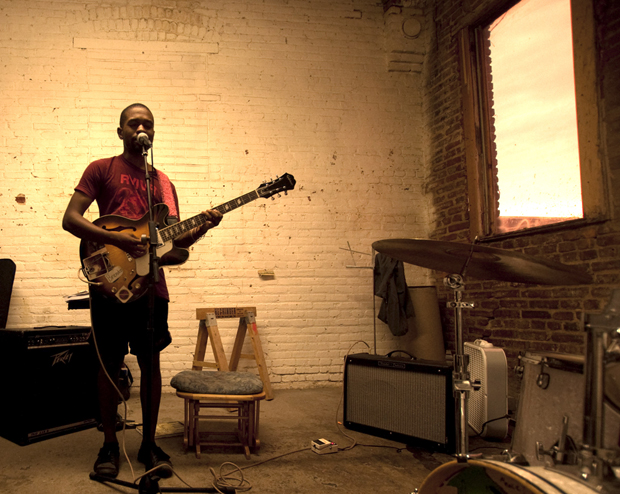The studios were never intended to be permanent. Manager/self-proclaimed building “guru” Mike Abrams, who is also a sculptor and photographer, needed studio space. He asked the owners years ago if he could build simple studio spaces inside of the vacant warehouse and charge artists modest rents.
“I didn’t expect it to last more than 5 years,” Abrams said.
Equity Residential bought the space and an adjoining lot in spring 2011, signaling the end of Gold Leaf. The developer plans to build 162 apartments on the site.
For some, an alternative
Artists have to contend with D.C.’s increasingly expensive rents as they search for both living and working space. JR Russ, a dancer, actor and arts manager, said he wasn’t able to afford D.C. rents after he graduated the University of Maryland in 2006. So he moved in with his parents in Southwest as he pursued an arts-related career.
“Anything you do that’s not relevant takes away energy,” he said.
Then Russ got lucky — he was accepted into the Brookland Artscape Lofts, at 3305 8th Street N.E., a new $13 million, 41-unit artist-housing building offering below-market leases to artists who make between $25,866 and $43,500. A two-bedroom rents for about $1,200. The building is the result of a partnership between nonprofit developer ArtSpace and Dance Place, and the project received a mix of federal and local grant money.
“There has to be a lot of solutions, but this is a very good solution,” Deborah Riley, co-director of Dance Place said. “These particular apartments are quite a bit bigger than market rate apartments, so you get a lot more room. They’re designed to have your work right there in your apartment, so you don’t have to rent another space.”
Russ, who also works as a teacher, can choreograph and hold rehearsals in his large, two-bedroom unit or in the building’s studio while not having to stress about paying rent. But there isn’t room for any more artists at the moment — the building is at capacity.
Faced with a challenge? Get creative.
Musicians have an added challenge: noise complaints. Harris noted a studio space he once had near Eastern Market, in a neighborhood that became more populated and more expensive.
“When people move into a certain neighborhood and pay a lot of money for a space, they don’t want to hear bands playing at 9, 10 o’clock at night,” Harris said. “And that was always the good thing about Gold Leaf. You could play 24 hours a day and it was so big and there was nothing around and no one to complain. And it’s very hard to find that in the District.”
Despite such difficulties, Laughing Man plans to stay in the District even after January. D.C.’s high property values has “dramatically affected the potential creative output of this area, but I feel good about the future,” Moses said. “I feel like there’s something learned about how to create community here that you can’t take away from the people of Gold Leaf.”
Abrams also wants to open more Gold Leaf-like studios in D.C. Ideally, he’d like a developer to make permanent room for artists in building plans, but in the meantime, he’s looking for another vacant space to temporarily use. Abrams dismisses the notion that such spaces are nonexistent in the city.
“A person has to be very motivated to kind of look in the nooks and crannies,” he said. “There’s a limited building stock, so sure, it’ll be more difficult. But I feel like if you want something badly enough, you’re going to make it work.”
Spoken like a true artist.
Photos courtesy of Bora Chung.









